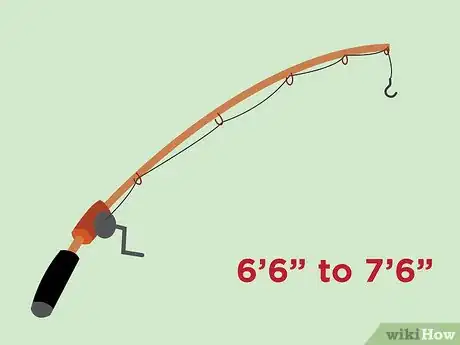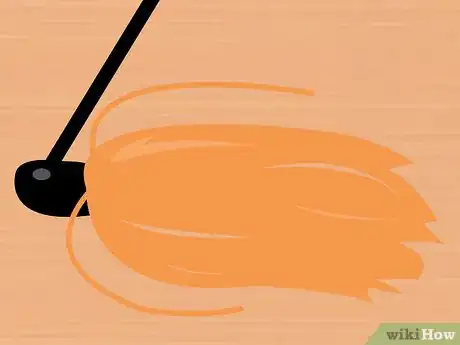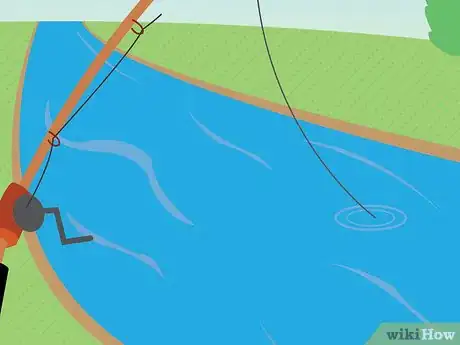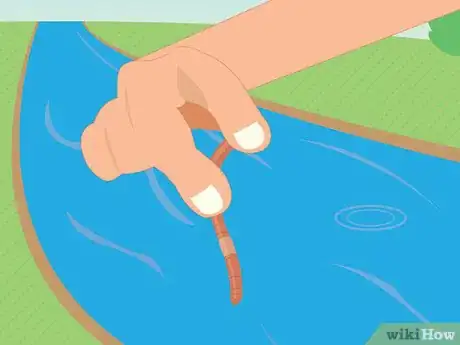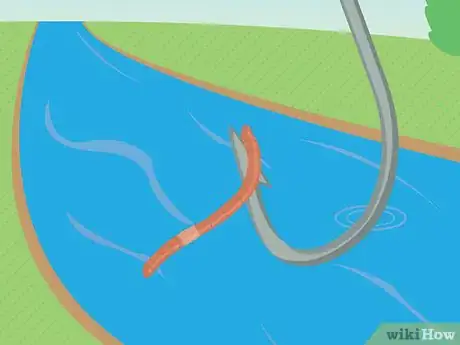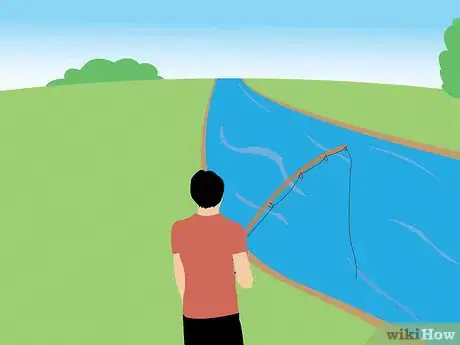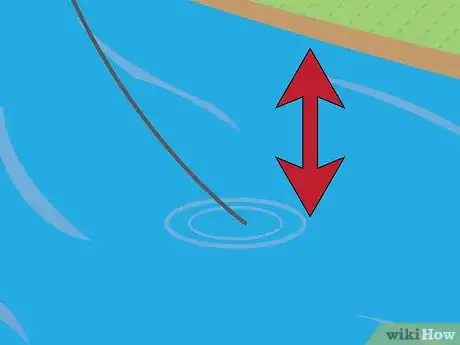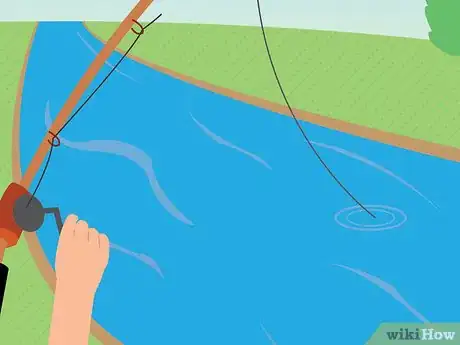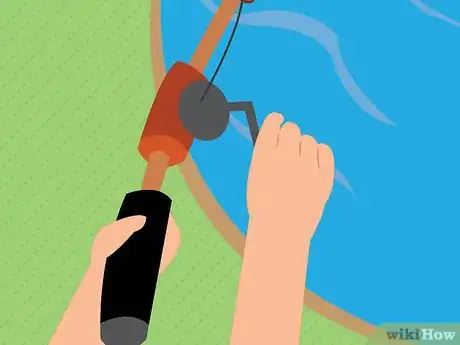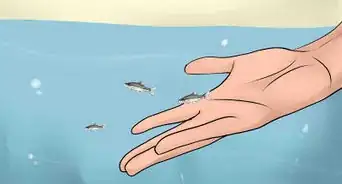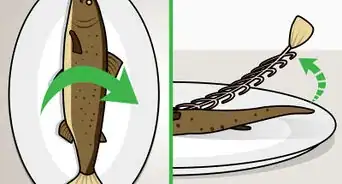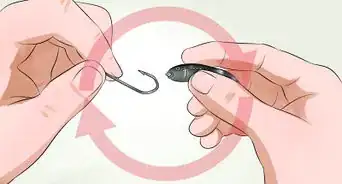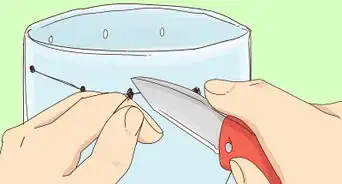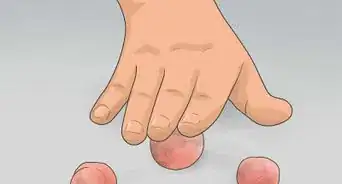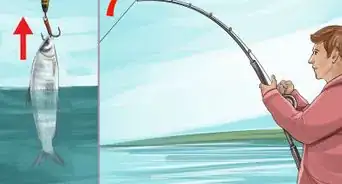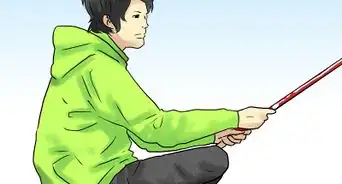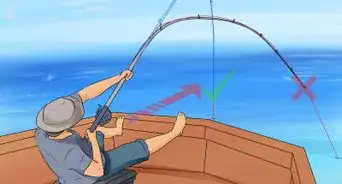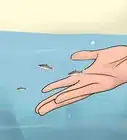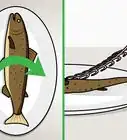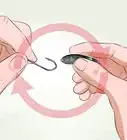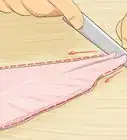This article was co-authored by wikiHow Staff. Our trained team of editors and researchers validate articles for accuracy and comprehensiveness. wikiHow's Content Management Team carefully monitors the work from our editorial staff to ensure that each article is backed by trusted research and meets our high quality standards.
There are 13 references cited in this article, which can be found at the bottom of the page.
This article has been viewed 51,069 times.
Learn more...
Because it's a low-calorie, high protein fish rich in omega-3 fatty acids and various other heart-healthy vitamins, it's no wonder that cod is one of the most popular sea foods.[1] Furthermore, cod liver oil is often taken as a dietary supplement for its beneficial fatty acids, vitamin A, and vitamin D.[2] In addition to being in high demand, cod can also be one of the trickier fish to catch. However, with the right equipment and the proper technique, you'll have no problem hooking the whitefish.
Steps
Gathering the Proper Equipment
-
1Find a “heavy duty” rod and a braided line. The rod should be rated for fifty pounds or heavier.[3] The preferred rod length is 6'6” to 7'6”.[4] The reel should have a substantial diameter in order to handle the larger lures or bait that you will be using, as well as a heavier fishing line. Experienced cod fishers recommend using a rod that is classified as “fast” or “extra-fast.” This refers to the “action” of the rod, which in simple terms, refers to how much the rod will bend while you are reeling in your cod. Fast action rods bend much less, and only in the top third of the length. These are great for jig fishing, which will be explained in more depth later.[5] Use a fifty pound braided line. Braided lines have less stretch than single lines, and they are extremely strong. It can support a larger amount of weight than regular fishing line, and a fish will not be able to break it easily.[6]
-
2Buy the bait. Cod can be pretty substantial and they're also strong. When it comes to catching cod, tiny bait is not going to cut it. You should use squid, mussels, crab, or very large worms.[7] Use live bait if possible. If not, use the freshest, highest quality bait available. Using a sinker, or a weight, in addition to the bait will help your bait reach the bottom.Advertisement
-
3Use a jig, if you are not using bait. Jigging is a popular method to catch cod. A jig is a type of fishing lure that consists of a sinker and a covered hook. Like with bait, the jig requires a heavy sinker to reach the depths that cods inhabit.[8]
Finding the Best Location
-
1Fish in cooler waters. Cod is found must abundantly in the north Atlantic and Arctic Oceans, in water from 32 degrees to 40 degrees Fahrenheit. In general, cod moves inshore during winter months and offshore during winter months, however their migratory patterns are not uniform among all populations.[9]
-
2Go deep. Cod are bottom-dwelling fish, so you won't catch them near the surface of the water. Typically they inhabit depths of 200 to 1,300 feet. Because of their depth, it is typically easier to catch cod off a boat. If you are a recreational fisherman and do not have access to a boat, try to locate a spot where you can be directly above deep water, such as on a dock or pier.[10]
-
3Find their feeding spots. Cod feed mostly on animals that live on the sea floor, such as worms and crabs. Luckily, cod are also creatures of habit. If you catch cod feeding in one spot, you're likely to find others there regularly. Take note of the spots where you find cod. While they do not form extremely dense schools like some fish, cod do congregate.[11]
Catching the Cod
-
1Put the bait on your hook. When it comes to baiting, more is not necessarily better. Experienced cod fishers recommend using well-trimmed bait with only a bit hanging off the hook. Do not cover the barb of the hook with bait. By leaving it exposed, you will have an easier time hooking the cod.[12]
- You can increase your chances of attracting cod by adding brightly-colored grubs to your hook. Grubs are small, soft lures that can move easily in water, which will attract fish.[13]
-
2Cast your line. To do this, hold your rod at waist level, and adjust your hands so that you are holding the handle and line comfortably. Move your hands so that you have a thumb over the release button. When pressed, the line in your rod will stay in place. When you are not pressing it, the line is free to fly. Obviously, releasing the line is the most important part of casting![14] As you press the release button down, pull the rod back so that it is over your dominant shoulder. Then, quickly sweep the rod forward. As you do this, focus on your intended target. Once the tip of the rod is at eye level, release the button. The weight of the bait or jig will pull the line. Once the line has been fully released and you are satisfied with the depth of your hook, press the button again.[15]
- Ensure that you have plenty of space behind you before casting. This requires a big range of motion and you will have a sharp hook on the end of your rod, so use caution to prevent hurting anyone or damaging anything.
-
3Jerk the bait or jig slightly up and down to create movement. Do this once the bait or jig has dropped to the bottom and the line is tight. The movement can make the jig or bait look like a living creature, which will attract the cod.
-
4Hook your cod. Once you feel a tug on the line, pull up your rod as much as needed to make sure your line is tight. Do not allow your line to go slack. In order to keep the line tight, reel in your line if the fish seems to be swimming toward you, and discontinue reeling if it swims in the opposite direction of you.
-
5Reel your cod in. First, lift your entire rod so the fish is being pulled toward you. After you've pulled the first toward you, lower the rod again slightly and begin reeling rapidly. Continue reeling quickly until the fish is close enough to get out of the water. As the fish fights against your line, it will tire itself out. It may be helpful to let it continue to fight and tire it out. Then get the cod close to the surface and scoop it up with a net, or just drag the fish onto surface if possible.
Community Q&A
-
QuestionWho charters fishing trips?
 M AHsan BilalCommunity AnswerChartered fishing trips are usually booked through a charter company. The captain, or a company running the charter, will take your booking for the boat for a certain amount of time at an agreed price.
M AHsan BilalCommunity AnswerChartered fishing trips are usually booked through a charter company. The captain, or a company running the charter, will take your booking for the boat for a certain amount of time at an agreed price.
References
- ↑ http://www.nmfs.noaa.gov/aquaculture/faqs/faq_seafood_health.html
- ↑ http://www.medicalnewstoday.com/articles/270071.php
- ↑ https://www.trails.com/how_12446_catch-cod-fish.html
- ↑ http://neangling.com/recommended-tackle/cod-tackle/
- ↑ http://www.tacklewarehouse.com/guides/rodselection.html
- ↑ http://fishing.about.com/od/basicfishinginstruction/a/Good-And-Bad-Of-Braid-Fishing-Line.htm
- ↑ http://www.torbayfishing.com/how-to-catch/how-to-catch-cod.htm
- ↑ http://www.bassresource.com/fish/jigs.html
- ↑ http://www.fao.org/wairdocs/tan/x5911e/x5911e01.htm#Geographical%20distribution
- ↑ https://www.trails.com/how_12446_catch-cod-fish.html
- ↑ http://www.fao.org/wairdocs/tan/x5911e/x5911e01.htm#Geographical%20distribution
- ↑ http://www.onthewater.com/winter-cod-fishing/
- ↑ http://www.bassresource.com/fish/grubs.html
- ↑ http://www.dec.ny.gov/outdoor/50859.html
- ↑ http://www.takemefishing.org/how-to-fish/how-to-catch-fish/how-to-cast/
About This Article
To catch cod, use a heavy duty rod that's rated for 50 pounds or heavier, as well as some braided line. Since cod can be big and strong, fish with large, live or fresh bait, like squid, mussels, crabs, or large worms. You can also fish with a jig if you prefer not to use bait. To find cod, fish in northern waters that are between 32 and 40 degrees Fahrenheit. Also, fish in deep waters since cod typically inhabit depths of 200-1,300 feet. To learn how to hook and reel in cod, scroll down!
